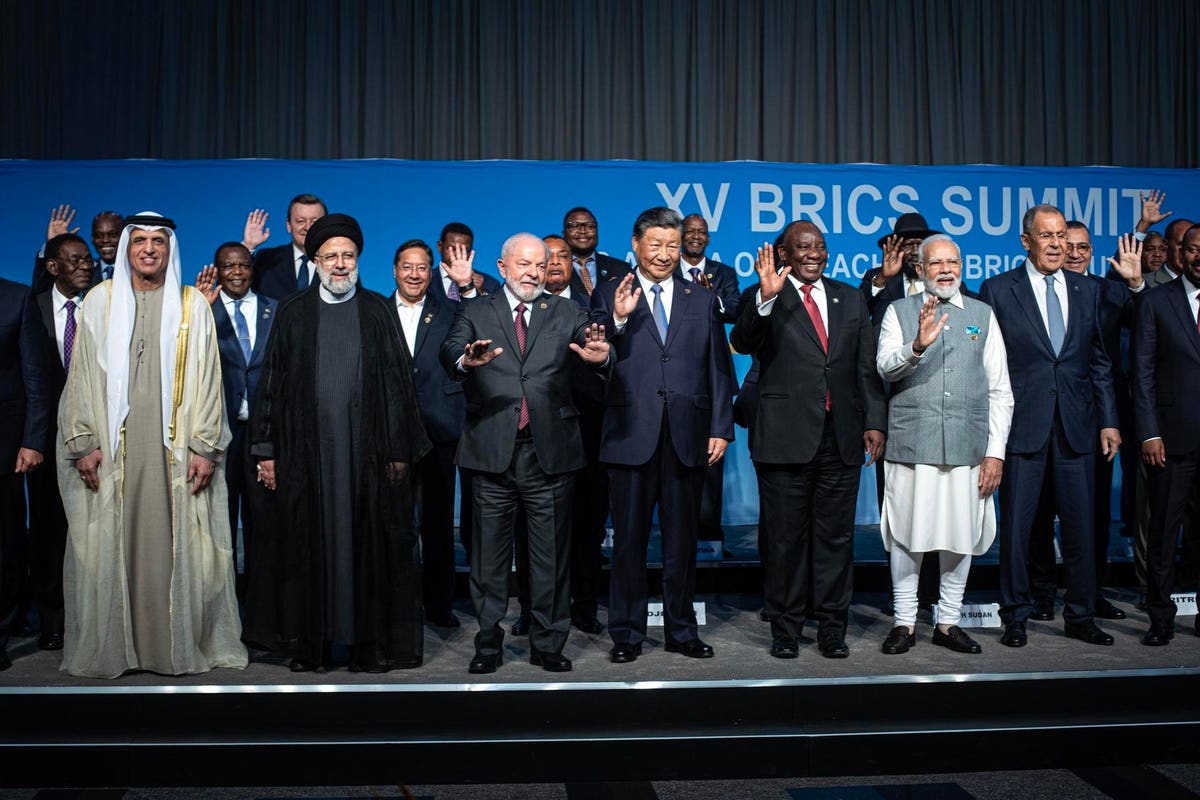When Goldman Sachs Chief Economist Jim O’Neill coined the term BRICs in 2001 to describe the future growth economies of Brazil, Russia, India and China as consequential new actors on the global stage, he captured the early mood of that era: the rise of those countries was just beginning, and the emerging world was on the move.
The BRIC nations embraced the term, invited South Africa to join them in 2010 (hence, the BRICS with a capital “S”), kicked off a round of summits over the next decade and the world seemed ready to be shaken by this acronym of new powers. Then reality kicked in. The 2010s were not as good for the BRICS. China saw its world-beating growth temper and, according to a BRICS Investment Report published by the United Nations this year, only South Africa saw FDI inflows grow robustly in this period.
Today, none of the BRICS – except India – would be considered hopeful economic stars and the geopolitical rivalry between the two largest members – India and China – has accelerated in recent years. Brazil, Russia, and South Africa are, in varying degrees, limping forward amid slow growth. They’re also under clouds of mismanagement and corruption and, in Russia’s case, increasing isolation.
Like an aging rock band, the BRICS show seemed to be fizzling out. Until now.
In late August, the BRICS leaders gathered in Johannesburg for one of their most consequential summits. Injecting new blood into the group, the BRICS announced six new members had been invited to join their club: Argentina, Egypt, Ethiopia, Iran, Saudi Arabia, and the United Arab Emirates.
In one swoop, the BRICS rose in relevance again, adding new financial firepower as well as geopolitical heft to a group that has come to be viewed by some as the new voice of the global South. The term encompasses countries across the developing world and emerging markets from Latin America to Asia to Africa. The irony that this “voice of the Global South” emerged from a Goldman Sachs white paper has been lost on many.
Still, in some senses, this new BRICS+ grouping – like the Goldman white paper – should be considered part of today’s zeitgeist. It’s a good example of a growing trend over the last two decades: the rise of a multi-polar world that supplanted both the Cold War era and the unipolar US dominance in the 1990s.
But multi-polar arguably fails to capture what is happening today. That terminology still revolves round poles driven by major powers. Today, the world is different. Small and middle powers can hold outsized sway through multiple alliances and partnerships. We are living in multi-aligned age.
As Narayanappa Janardhan, an Abu Dhabi-based scholar with the Anwar Gargash Diplomatic Academy, said in an interview: “The multipolar world we knew has now shifted. It is no longer conditioned by superpowers alone. It is just as likely to be conditioned by middle and smaller powers, who prefer multi-alignment.”
This geopolitical diversification process both insulates those countries from superpower conflict, but also offers mediation opportunities that the U.S. can leverage. Examples include the United Arab Emirates using its ties with Russia to facilitate a prisoner exchange or Saudi Arabia hosting a Ukraine peace conference that attracted more than 40 nations, including several in the global South that shunned a similar conference in Copenhagen.
This view was encapsulated in a pithy way by a senior UAE
UAE
This is rooted in “the UAE’s understanding of the way international relations have evolved in the 21st century,” Mohammed Baharoon, Director-General of the Dubai Public Policy Research Center (b’huth), wrote in an essay for the Middle East Institute in Washington. “The world order is not uni-, bi-, or even multipolar, but rather networked.”
This world view helps explain how other states also view today’s partners. Rather than rock-solid alliances based on shared values, networks of partnerships arise with all participants seeking their own interests.
Ali Shihabi, a prominent commentator with close ties to the Saudi establishment, notes that “this is an irreversible trend for Saudi Arabia. Ties with China, India and the countries of the Global South are too important for Saudi Arabia to ignore. They will continue to cultivate these ties, while maintaining their security and diplomatic relationship with the U.S.” Yet another example of multi-alignment.
But, what of China? Is the BRICS expansion a victory for Beijing and President Xi Jinping? Steve Tsang, Director of the China Institute at SOAS in London thinks so.
“I think this is a clear win for Xi,” Tsang says. “He does not want to seize leadership of the liberal international order from the U.S. Rather, he wants to replace it with a Sino-centric new world order. This explains why China is not relying heavily on its UN Security Council seat to enhance its control over the UN and its agencies but on engaging with member nations to get them to support China.”
So, while China is playing traditional great power politics, hoping to become one of the key poles of this new world order, the other newer members of BRICS are playing a different game of strategic multi-alignment. “No, thank you,” they seem to be saying: we’re not interested in solely being in one orbit of a great power or another. Consider India. It’s a member of the security alliance known as the Quad that groups it with Australia, the US, and Japan, and considers itself a rising great power in its own right.
India is also a member of the newly formed I2U2 mini-lateral group, linking it with Israel, the U.S. and the UAE in a primarily economic partnership. U.S President Joe Biden called India “the indispensable partner.” Neither India nor South Africa are interested in a fight with the United States – nor are most of the newest BRICS members.
Nadim Koteich, a prominent Abu Dhabi-based journalist with Sky News Arabia, summed up this era well when he said: “Today’s multi-aligned world isn’t your Cold War-era anti-Americanism or simplistic non-alignment. It’s about pragmatic flexibility and global interdependence. We’re in a post-multipolar era where fluid alliances demand diplomatic innovation.”
Read the full article here













Leave a Reply